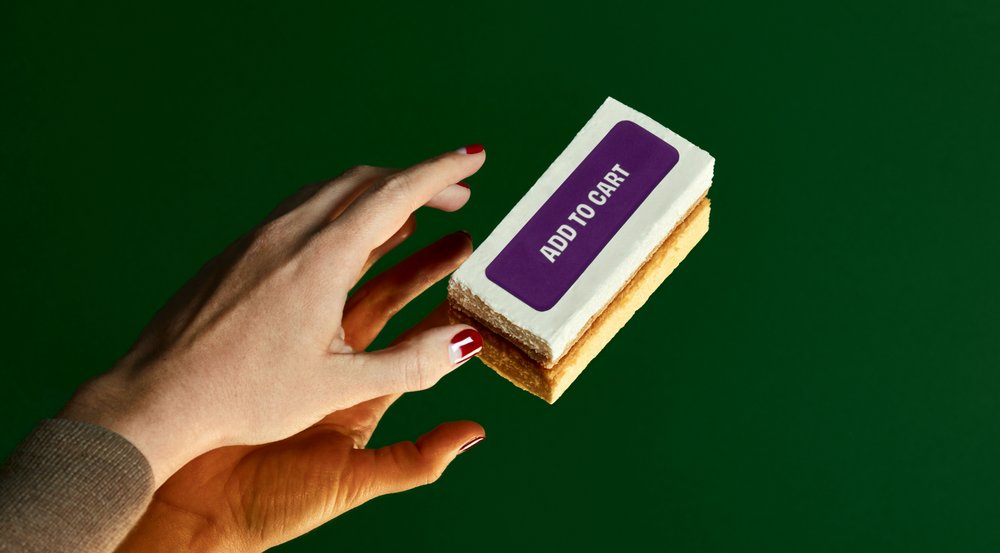Set your online store up for success this holiday season with our free downloadable workbook.
The email you entered is invalid.
Thank you for subscribing.
By entering your email, you indicate that you have read and understood our Privacy Policy and agree to receive marketing from Squarespace.
As you attract new customers to your site during the holidays, it’s a perfect time to turn that momentum into repeat business. There are a few steps you can take to hold on to new customers and turn them into repeat customers, even after the season has ended.
Use an email list to build customer relationships.
Set up smooth returns for a positive customer experience.
Add perks for loyal customers and brand advocates.
Have questions about holiday sales before you focus on a customer retention strategy? Check out the complete Holiday Selling Guide.
Stay connected with your email list
Don’t underestimate the power of a mailing list in your marketing strategy. Your emails are an opportunity to build an emotional connection with your customers and encourage brand loyalty. Once you have a mailing list in place, you can periodically send out discount codes or share new items in your store to encourage return customers.
One simple post-holiday email to send is a promotion on your leftover inventory in January. Take stock of what you want to move and plan a sale, then inform your mailing lists to keep things moving. Make sure your emails include an option to unsubscribe, so that customers feel like they can opt out at any time.
You can even set up automated emails, which are pre-written by you and go out whenever a customer does a specific thing on your site. For example, you can send an automated welcome email with a discount code when someone signs up for your newsletter. Or you can automate product recommendations based on what someone’s bought before or their spend amount.
Use customer data to send emails targeted to different types of customers. The Squarespace Profiles panel keeps track of everyone who's signed up for your mailing list, as well as the emails of everyone who has previously purchased a product from your website. You can also find metrics like a customer’s order history and the average amount of money they spend per order.
Set up a smooth returns process
Even if a customer isn’t happy with their product or they chose the wrong gift, you can make sure they have positive experiences with your brand. There are few key details to keep in mind when setting up your returns process.
Have a clear, easy-to-find return policy on your website. Whether on its own page, an FAQ page, or both, having a clear policy gives customers peace of mind. For some customers, it even impacts whether they’ll buy from you or not.
Decide how much you want to refund. You can choose to offer a full refund or a partial refund. A partial refund usually refunds the purchase price, minus shipping and/or other fees. A full refund leaves you on the hook for return shipping and payment transaction fees.
Be clear about how you handle shipping costs. You can either have the customer cover return shipping, or cover the cost by providing a prepaid return label. Some shipping extensions can generate return labels, track shipments, and keep you and the customer informed as the return processes.
Offer options for the refund method. Refunds typically go back to a customer’s credit card, but you can also create a special discount that gives them store credit if you want.
Your returns policy is ultimately up to you. You’ll want to balance giving your customers great service with what your bottom line can handle. If covering shipping or transaction fees would put you too far in the red, be upfront with customers about it and make completing the return as seamless as possible on their end.
When dealing with customers who want to return an item, remember to use a warm, empathetic tone. You have the opportunity to turn even dissatisfied customers into brand advocates if you make the returns process hassle-free and pleasant. If people feel they can trust you with returns, it’s more likely that they'll shop with you again.
Boost and reward customer word-of-mouth
Typically, customers trust the recommendations of friends and family more than they trust marketing or advertisements. So in addition to rewarding happy customers for their loyalty, give them incentives to get the word out. Customers naturally sharing about your business acts as social proof—a way to show regular people are fans of yours.
One way to encourage word-of-mouth is to start a referral program to reward existing customers who recommend your business. Simply send the original customer a discount once their friend’s transaction is complete. You can also try to increase your sales by offering a two-sided referral code, so a customer can send a friend a discount code and receive that same discount once their friend uses it.
Social media is one of the best ways to get the word out about your customer loyalty programs or boost customer endorsements. Try encouraging customer feedback by offering a chance to be featured on your brand account. Or offer discount codes to anyone who tags your store in a post or gives you a shoutout in a video..
Developing customer loyalty isn’t a short-term game—you’ll need to engage people throughout the year to build a loyal customer base and increase your customer retention rate. To help put your year-long brand building plans into action, measure the success of your holiday marketing.
This post was updated on September 15, 2023.

